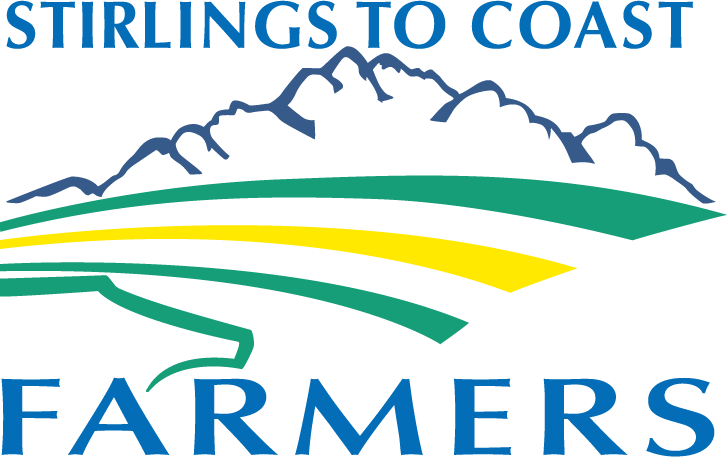SNAILS R&D
INTRODUCTION
Small conical snails are an emerging pest in southern WA. They can damage crops at germination, reduce pasture biomass and potentially downgrade harvested grain if not managed carefully.
Snail management requires a strategic approach that can include removing the green bridge, burning windrows and timely baiting early in the season to prevent snails from breeding. However, even with a good program of control, snails can be a problem at harvest. Stirlings to Coast Farmers have been at the forefront of small conical snail management in WA and have instigated a number of R&D and extension projects to aid growers’ in their decision making on the most effective forms of management and in developing an integrated pest management strategy for small conical snails on their farms.
Mt Barker grain grower Iain Mackie has been using snail baits in his integrated pest management strategy and as a result the crop pest was well managed in the 2018/19 season.
SCF have developed a number of resources for growers throughout these projects.
Snail Management Resources
Case Studies & Reports
Fact Sheets
Snail Cleaning Calculator
Videos
Projects…
Impact of stubble management on mortality of small conical snails
Supported by the Council of Grain Growing Organisations (COGGO)
Stirlings to Coast Farmers (SCF) are currently investigating if summer stubble treatments could lead to a reduction of small conical snails at a paddock level. This project is based on South Australian (SA) practices where snails on stubbles are knocked onto the ground surface on hot (+35°C) days, where they dehydrate and die. Stubble treatments in SA are mainly for the control of the larger round snails, but farmers have speculated that stubble treatments can reduce small conical snail numbers. We aimed to determine if stubble treatments could reduce small conical snail numbers in Western Australia where very little research like this has been completed before.
The treatments investigated in our trial are cabling, stubble crunching and speed tilling. Cabling was done with an inch-thick cable towed between two utes driving at 20km/hr. For stubble crunching, we used a 12m wide machine that cut the stubble into 25cm lengths. A three-metre wide speed tiller was hired to mix topsoil to a 10cm depth. The speed tiller caused the most aggressive soil and stubble disturbance.
Snail density counts were completed before and after treatments with large numbers of snails found in the paddock. Snail density in the speed tiller plots was 58% lower compared to the nil. There was no statistical difference between cabling, stubble crunching and the nil control early in the season however there was an increase in snail numbers in the cabling and stubble crunching plots after treatments were applied. The confusing result could be due to the extreme variability of snail populations within the paddock and the plots themselves. We are hopeful that measurements of snail numbers in the grain sample at harvest will provide greater clarity on the treatment effects.
Our snail counts suggest that speed tilling was most effective; however, this could be due to the machine mixing the snails thoroughly into the soil, making them hard to find and therefore count. However, if snails are buried and subsequently die, this would be an effective control method.
Researcher observations suggest that cabling and stubble crunching would cause less snail mortality because they were not aggressive enough to move or disrupt the harvest row compared to the speed tiller. Small conical snails were easily found within the seeding furrows after the cabling and stubble crunching treatments were completed. The speed tiller mostly removed last year’s seeding furrows which would have caused more considerable disruption to the snails and their habitat.
At harvest time, a grain box camera (GrainCam) will be used to map the snail populations from the four treatments. Project partners John Moore and other DPIRD staff will be engaged to install and manage GrainCam at the trial site in 2020 and 2021.
Effective baiting options for the control of conical snails in the Albany port zone.
Supported by the Grains Research and Development Corporation (GRDC)
Key Messages;
In order to minimise plant damage, baits should be applied close to the time of crop emergence.
The number of bait points in important; the more bait points per square metre, the better the kill. Calibrate spreaders to ensure an even spread of baits across the paddock to increase the likelihood of snails coming across them and feeding.
There is very little difference in snail mortality between the cheaper non-rainfast bait, Meta, and the more expensive rainfast, Metarex.
Growers need to weigh up the costs of control and level of infestation in deciding on a bait type and strategy to control snails on their farm.
Snails and slugs mitigation for farmers in Great Southern regions.
Supported by the Council of Grain Growing Organisations (COGGO).
Stirlings to Coast worked collaboratively with other grower groups and the Department of Primary Industries and Regional Development (DPIRD) to deliver the project outcomes. A best practice manual on snail control for Great Southern farmers was produced.






